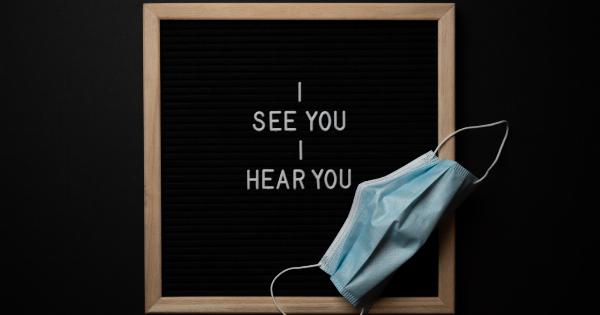Mental illness is a growing concern in the world today with an estimated one in four people affected by it at some point in their lives.
It is a significant problem, and diagnosis can be difficult, putting patients at risk of late or incorrect treatment. Many people wonder if there is a test for predicting mental illness, and while there is no definitive answer, there are some tests that can help.
What is Mental Illness?
Mental illness, also known as mental health disorders, refers to a wide range of conditions that affect a person’s thinking, mood, and behavior.
These disorders can take many different forms, from anxiety and depression to more severe mental conditions such as schizophrenia, bipolar disorder, and misophonia.
It is essential to identify mental illness early on, as it can significantly impede a person’s daily life and deteriorate their quality of life over time.
Unfortunately, mental illness is often difficult to diagnose until it has become more severe, making early detection and treatment essential to managing and improving the individual’s mental health.
Challenges in Diagnosing Mental Illnesses
Diagnosing mental illnesses is a challenge, and there is still no definitive test for predicting mental illness. However, there are many reasons why it is hard to detect, including:.
- Many mental illnesses present similarly, and it can be difficult to distinguish between them
- Doctors and psychiatrists rely primarily on self-reported information, making it difficult to identify specific mental health disorders with any certainty
- Patients may not report the full extent of their symptoms, or they may not be aware that they are experiencing a particular disorder
- There is always a possibility of misdiagnosis due to the lack of diagnostic tools and tests that can specifically identify the presence of mental health disorders
Tools Used in the Diagnosis of Mental Health Disorders
Currently, several tools and tests can aid in predicting mental illness, and although not all of them are diagnostic, they can help in detection and management of individual mental health disorders. Some of the commonly used tests include:.
Mental Status Examination (MSE)
This tool is a series of questions and observations designed to test an individual’s cognitive functioning and mental status. The MSE includes questions that assess memory, orientation, speech, and thought processes, among other areas.
The MSE is used by psychologists, psychiatrists, and other mental health professionals to diagnose and assess individuals with a variety of mental health disorders, including depression, anxiety, and schizophrenia.
It is also used to identify various cognitive impairments and assess the severity of cognitive decline in individuals with Alzheimer’s disease or dementia.
Diagnostic and Statistical Manual of Mental Disorders (DSM-5)
The DSM-5 is the fifth edition of the Diagnostic and Statistical Manual of Mental Disorders, which is used by healthcare professionals to diagnose and classify mental health disorders.
The manual includes a comprehensive list of mental health disorders, their symptoms, and other criteria that must be met to diagnose the condition correctly.
The DSM-5 is an essential tool for mental health professionals and clinicians, as it allows them to establish a common language for diagnosing mental health disorders.
This enables easier communication between clinicians and allows standard diagnoses for every mental health disorder.
Mood Disorder Questionnaire (MDQ)
The MDQ is a screening tool used to detect bipolar disorder in patients. The questionnaire consists of 13 self-reported questions about the patient’s mood and behavior over the past year.
MDQ is a reliable tool for diagnosis and detection of bipolar disorders. It can also assist in identifying manic or hypomanic episodes for people not diagnosed with bipolar disorder.
Patient Health Questionnaire (PHQ-9) and Generalized Anxiety Disorder (GAD-7)
The PHQ-9 is a tool to help assess and diagnose depression, while the GAD-7 is a questionnaire that detects generalized anxiety disorder.
Both of these screening tests require individuals to answer questions about their feelings and behaviors in the past two weeks.
These questionnaires help identify symptoms of depression and anxiety that may cause an individual to seek further evaluation or therapy.
In-The-Moment Apps and Tools
This type of test is one of the newest and rapidly advanced. It is also one of the handiest for people with mental illness. So many apps and tools available online aim to help people with depression, anxiety, or other mental conditions.
One common tool is mood trackers, which can help patients and doctors understand patterns and symptoms, monitor symptoms, and track their progress over time.
Brain Tests
Brain imaging, such as magnetic resonance imaging (MRI), CT scans, and PET scans, can also be used to diagnose and study mental illnesses.
By observing the structure and activity of the brain, healthcare providers can assess the severity of certain mental disorders, such as depression and schizophrenia.
Conclusion
Diagnosing and predicting mental illnesses are still challenging, and there is no definitive test for predicting mental illness. However, various tools and techniques can assist clinicians to identify and manage mental health disorders.
Clinicians should diagnose a mental illness with a combination of interviews, screenings, and physical examinations and use their professional judgment to make a diagnosis. As we continue to learn more about mental disorders and treatment, these tools and techniques will continue evolving to ensure accurate diagnoses and better outcomes for patients.






























